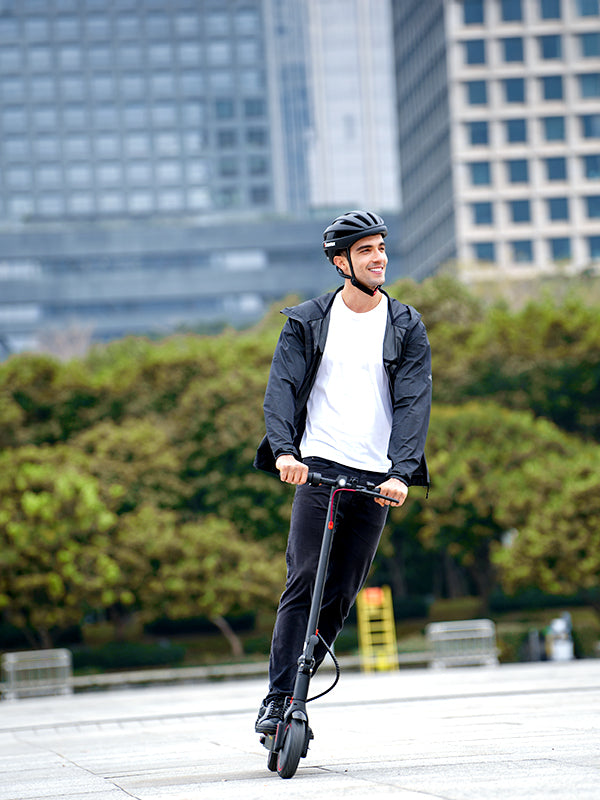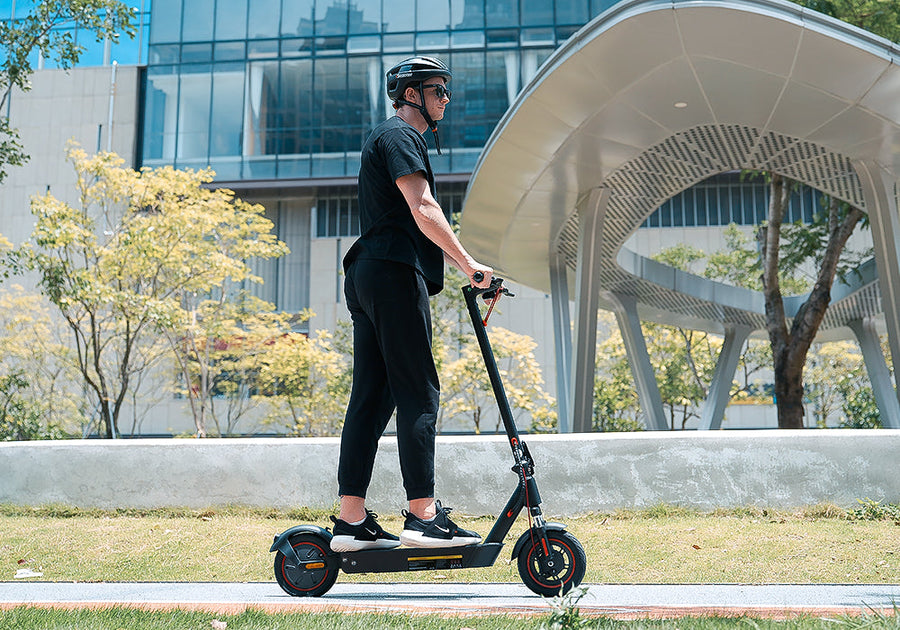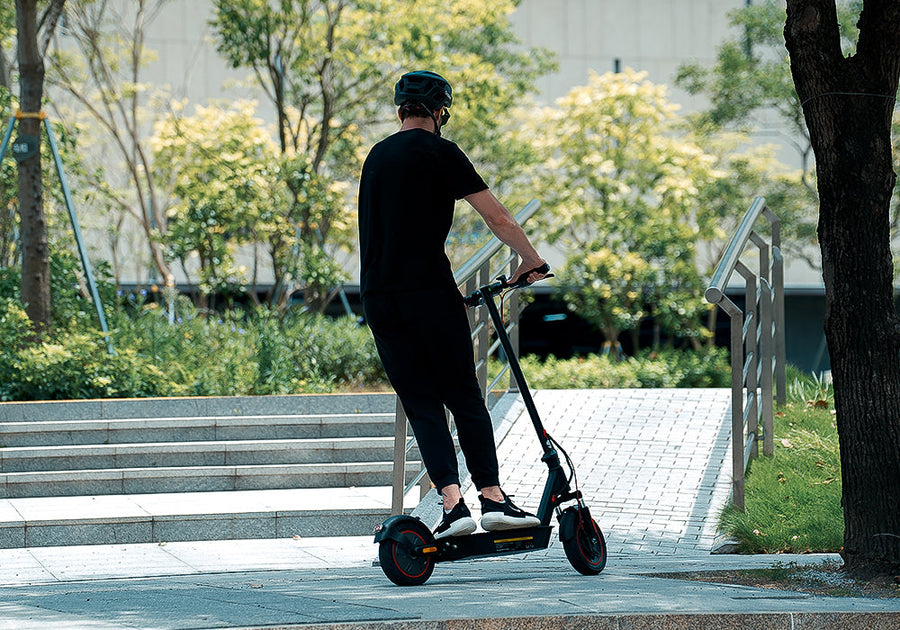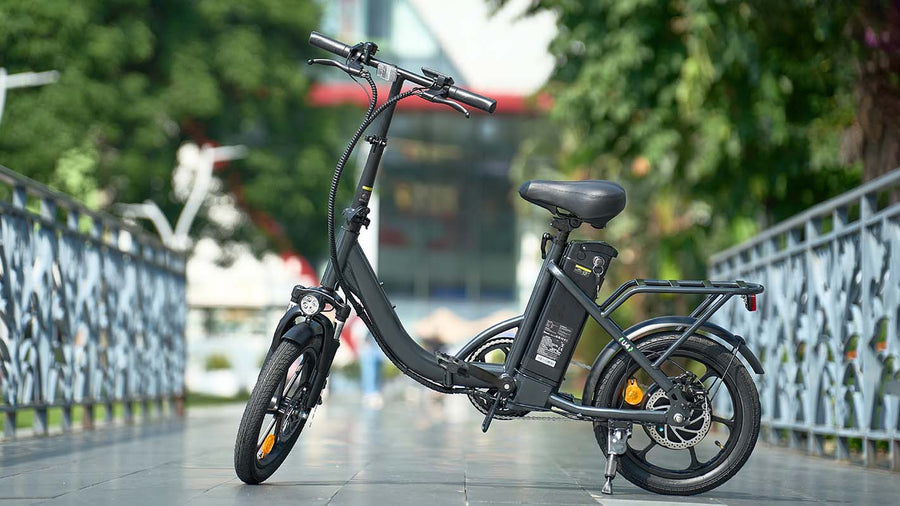
How Long Does an Electric Bike Battery Last? Range, Lifespan, and Factors That Affect Performance
Electric bikes are becoming an increasingly popular way to commute, explore, and enjoy cycling without getting exhausted. But one of the most common questions among both new and experienced riders is: how long does an electric bike battery last? Understanding battery life is crucial, not only for planning your rides but also for maintaining the longevity of your e-bike.
Factors like battery type, capacity, riding style, terrain, and the level of pedal assistance all play a role in determining how far and how long you can ride on a single charge. In this article, we’ll break down everything you need to know about e-bike batteries, including their types, features, and tips to maximize their performance.
How Electric Bike Batteries Work: E-Bike Power and Range
The Role of the Battery in Your E-Bike
An electric bike battery is the heart of your e-bike, providing the power that gives you an extra boost while pedaling. Unlike a regular bicycle, where your legs supply all the energy, an e-bike battery works together with the motor to make riding easier, especially on hills or longer distances.
Key Measurements: Volts, Amps, and Watts
When evaluating battery performance, there are a few key measurements to understand: volts, amps, and watts. Volts indicate the speed potential of your bike—the higher the voltage, the faster energy can be delivered to the motor. Amps measure the electrical current, showing how much power your battery can provide, while watts, which combine volts and amps, give a clear picture of the overall power output your e-bike can deliver.
Understanding Amp Hours (Ah) and Watt-Hours (Wh)
Another important factor to consider is amp hours (Ah) and watt-hours (Wh). Amp hours indicate how much current the battery can deliver over an hour, giving an idea of its capacity, while watt-hours take both voltage and amp hours into account, representing the total energy available for your ride. These metrics help you determine how far and how long you can ride before needing a recharge.
Battery Size, Riding Style, and Range
The relationship between battery size, riding style, and achievable distance is also critical. Larger batteries with higher Ah or Wh ratings can power longer rides and support higher levels of pedal assistance, whereas smaller batteries are often sufficient for short commutes or casual cycling. Understanding these basics ensures you select the right battery for your needs and get the most out of your e-bike.
Types of Electric Bike Batteries
Lithium-Ion Batteries
Most modern electric bikes rely on lithium-ion batteries due to their lightweight design, long-lasting performance, and minimal memory effect. These batteries are efficient, allowing e-bikes to carry enough energy for extended rides without adding excessive weight. Unlike older battery types, lithium-ion packs can handle hundreds of recharge cycles without significant degradation, making them ideal for regular use.
NiMH and Lead-Acid Batteries
Other battery types, such as NiMH (Nickel-Metal Hydride) and lead-acid batteries, are less common today because they tend to be heavier and lose charge faster over time. NiMH batteries can experience a higher self-discharge rate, while lead-acid batteries are bulky and require more maintenance, making them less practical for daily e-bike use.
Battery Mounting Positions
The mounting position of the battery also affects performance and handling. Centre-mounted batteries, often located along the bike’s downtube, provide better balance and stability, while rear-mounted batteries, typically attached to a rack, add weight at the back, which can improve traction but slightly alter steering feel. Choosing the right battery type and placement is crucial to ensure optimal ride quality and efficiency for your e-bike.
Do Electric Bike Batteries Have Fuses?
Electric bike batteries are designed with safety in mind, and one important component that helps protect them is the battery fuse. A fuse acts as a safety device by breaking the electrical circuit if the current becomes too high, preventing potential damage to the battery or motor. While battery fuses are rarely triggered, they are essential for protecting your e-bike’s electrical system from overloads or short circuits.
If a fuse does blow, it can significantly affect battery performance. You may notice a sudden drop in power, difficulty charging, or even a complete failure of the battery to deliver energy. Troubleshooting a potential fuse issue starts with checking the battery charger and the battery pack itself to ensure they are functioning properly. A multimeter or voltmeter can be used to test the battery and determine if the fuse has blown.
For those who are comfortable with DIY repairs, replacing a fuse can be straightforward, as most are located in the center of the battery pack. However, if you are unsure or hesitant to open the battery, it’s always recommended to seek assistance from a professional e-bike technician to avoid causing further damage. Regular maintenance and awareness of fuse condition help ensure your e-bike continues to run safely and efficiently.
How Long Does an Electric Bike Battery Last? Typical Range, Factors, and iHoverboard Model Comparisons
An electric bike battery typically lasts between 3 to 5 years, depending on how often it’s used and how well it’s maintained. In terms of charging cycles, most e-bike batteries can handle 500 to 1,000 full charges before their capacity starts to decline noticeably.
On a single charge, the range can vary widely—from around 25 miles up to 65 miles or more—depending on factors like the rider’s weight, terrain, speed, and the level of pedal assistance used. Regular care, such as proper charging habits and avoiding deep discharges, can help extend the overall lifespan of the battery.
Factors Affecting Battery Life
The lifespan and range of an electric bike battery depend on several factors. Key considerations include battery capacity (Ah and Wh), voltage, riding style, terrain, and the level of pedal assistance used. Heavier riders, faster speeds, frequent stops and starts, and hilly or uneven terrain can all reduce the distance your battery can travel on a single charge.
Battery Size and Performance
Larger batteries with higher amp hours and watt-hours generally provide longer ranges, making them ideal for long commutes, extended rides, or routes with steep inclines. Smaller batteries are suitable for shorter trips and urban riding where lightweight and portability are priorities. Understanding volts, amps, and watts helps riders match battery performance to their specific needs.
Typical Battery Range of Electric Bike Models from iHoverboard UK
Different iHoverboard models come with various lithium-ion batteries, each offering a distinct range. For example, the U1 Folding Bike provides 25–40 miles per charge, while the U2 Step-Thru can reach up to 65 miles. The U3 Fold-Up, Ucity City Commuter, M10 All-Terrain, and U4 Low Step-Through models fall within the 25–65 mile range depending on battery capacity and riding conditions. Knowing these ranges helps riders plan trips confidently and avoid running out of power unexpectedly.
The table below highlights the average battery life, motor type, and charging time for each model, helping you choose the right e-bike to suit your riding needs.
|
iHoverboard Model |
Battery Capacity |
Motor Type |
Approx. Range per Charge* |
Battery Charge Time |
|
36V 7.8Ah |
Hub Motor |
25–40 miles |
3–4 hours |
|
|
36V 13Ah |
Hub Motor |
43–65 miles |
4–6 hours |
|
|
36V 7.8Ah |
Hub Motor |
25–40 miles |
2–3 hours |
|
|
36V 10.4Ah |
Hub Motor |
43–65 miles |
4–6 hours |
|
|
36V 10.5Ah |
Hub Motor |
44–60 miles |
4–6 hours |
|
|
36V 10.4Ah |
Hub Motor |
35–55 miles |
4–5 hours |
Tips to Optimise Electric Bike Battery Range for Longer Distance and Better Performance
Maintain Pedaling Cadence Above 50 RPM
One of the most effective strategies to extend battery life is to keep a pedaling cadence above 50 revolutions per minute (rpm). Slow pedaling uses more energy and puts extra strain on the motor, reducing the distance you can travel on a single charge.
Reduce Total Bike Weight
Carrying extra luggage or unnecessary accessories adds weight, which forces the motor and battery to work harder. Reducing the total weight of your bike helps maximize efficiency and extends battery range.
Ride Smoothly and Avoid Stop-and-Go
Smooth, consistent riding is essential for battery efficiency. Avoiding constant stop-and-go cycles conserves energy, allowing your battery to last longer on each ride.
Use Proper Gear Shifting
Correct gear shifting ensures your motor and battery operate efficiently. Riding in the right gear reduces strain and prevents unnecessary power consumption, helping you get more distance from each charge.
Maintain Tyre Pressure
Keeping your tyres inflated to the maximum recommended pressure lowers rolling resistance. This allows the bike to glide more easily, using less battery power and increasing the overall range.
Electric Bike Battery Positions: How Placement Affects Range, Handling, and Performance
Where a battery is positioned on an electric bike can have a big impact on ride quality, handling, and convenience. Different mounting options, such as frame-mounted or frame-integrated batteries, offer unique benefits in terms of balance, accessibility, and design. Understanding these differences helps riders choose the setup that best suits their riding style and needs.
Frame-Mounted Electric Bike Batteries: Easy Removal and Balanced Handling
Frame-mounted batteries are commonly positioned along the bike's downtube or on a rear rack, offering easy removal and ergonomic design. This placement provides balanced weight distribution, enhancing handling and stability during rides.
For instance, the U2, U3, and Ucity electric bikes all use frame-mounted batteries, providing easy removal, balanced weight distribution, and a practical design suitable for everyday riding.
Frame-Integrated Electric Bike Batteries: Seamless Design and Efficient Performance
Frame-integrated batteries are built directly into the bike frame, offering a seamless and streamlined design. They can also store up to 500Wh of energy and allow for convenient in-frame charging. While less visible than external batteries, integrated batteries maintain excellent weight distribution, contributing to a more stable and efficient ride.
Factors That Affect How Long a Battery Lasts
Rider Weight and Speed
The weight of the rider and the speed at which they ride have a direct impact on battery life. Heavier riders or faster speeds require more power from the motor, which can reduce the distance achievable on a single charge.
Terrain and Route Difficulty
Hilly or uneven terrain demands more energy from the battery compared to flat surfaces. Routes with frequent climbs or rough surfaces can significantly decrease battery range, while smooth, level routes help conserve power.
Level of Pedal Assistance Used
Electric bikes offer different levels of pedal assistance, from low to high. Using higher levels of assistance increases motor output, which drains the battery faster. Riding in eco or lower-assist modes can extend battery life per charge.
Frequency and Style of Charging
How often and how the battery is charged also affects its longevity. Frequent deep discharges or overcharging can reduce overall battery health over time. Following recommended charging practices helps maintain optimal performance.
Age of the Battery and Number of Charge Cycles
Batteries naturally degrade over time. Older batteries or those that have gone through many charge cycles may not hold a full charge as efficiently as newer ones, reducing range and overall performance.
Conclusion
Knowing how long an electric bike battery lasts can make a huge difference in your riding experience. From understanding the differences in battery types and capacities to learning how factors like rider weight, terrain, and riding style affect range, being informed allows you to get the most out of your e-bike. By following simple maintenance tips and selecting the right iHoverboard model for your needs, you can ensure your battery delivers reliable performance for years to come. With the right knowledge, you can confidently enjoy longer rides, tackle challenging routes, and make your e-bike a dependable part of your daily journey.
FAQs
How many hours does an electric bike battery last?
An electric bike battery usually lasts between 2 to 6 hours of riding time on a single charge, depending on the battery capacity, the level of pedal assistance used, and the type of terrain you’re riding on. For example, riding in eco mode on flat ground will make the battery last longer, while hilly routes or high-assist modes will reduce the total hours available.
Where is the best place for the battery on an electric bike?
The best place for the battery on an e-bike is usually in the frame, as it provides balanced weight distribution, stability, and a sleek design. A frame-mounted battery also makes the bike easier to handle and ride comfortably. Rear-mounted batteries are another option, offering good traction and easy access, but frame placement is often preferred for overall performance and balance.
How much does it cost to replace the battery in an electric bike?
Replacing an electric bike battery typically costs between £200 and £600 or more, depending on the battery’s capacity, brand, and type. Higher-capacity lithium-ion batteries or batteries from premium brands may cost more, while smaller or standard batteries tend to be less expensive. It’s important to choose a compatible battery to ensure optimal performance and safety.
Should I keep my electric bike battery fully charged?
It’s not necessary to keep your e-bike battery fully charged at all times. In fact, lithium-ion batteries last longer when kept between 30% and 80% charge rather than always being topped up to 100%. Charging fully before long rides is fine, but for everyday use, avoiding constant full charges and deep discharges can help extend the overall lifespan of your battery.
How far will an electric bike go on a full charge?
On a full charge, an electric bike can typically travel between 25 and 65 miles, though some models with larger batteries may go even further. The exact range depends on factors like the battery capacity, the rider’s weight, terrain, speed, and how much pedal assistance is used. Riding in lower assist modes and on flat terrain will help maximize the distance you can cover per charge.





































































Still, need help? Contact Us: support@ihoverboard.com
What's the option? Check out the option now!
Leave us a message